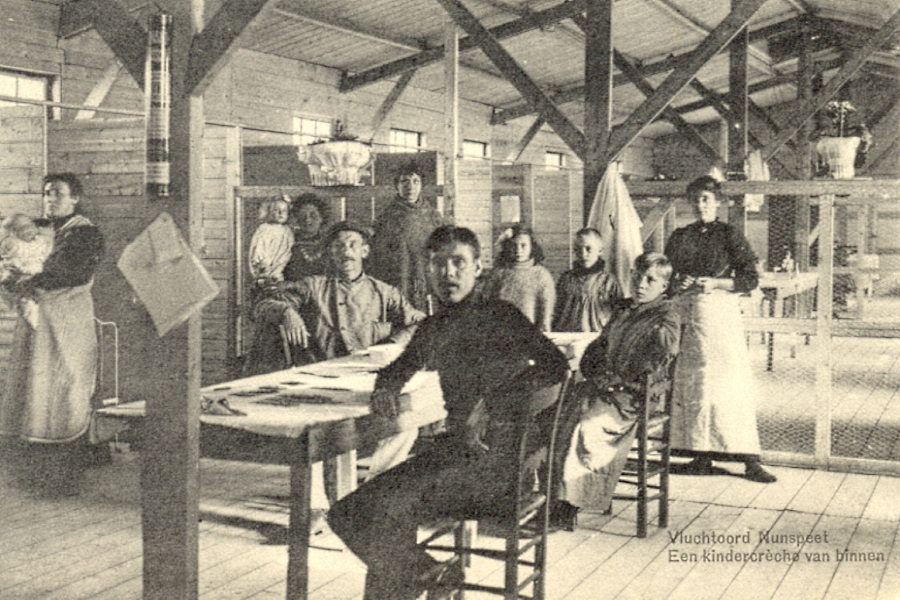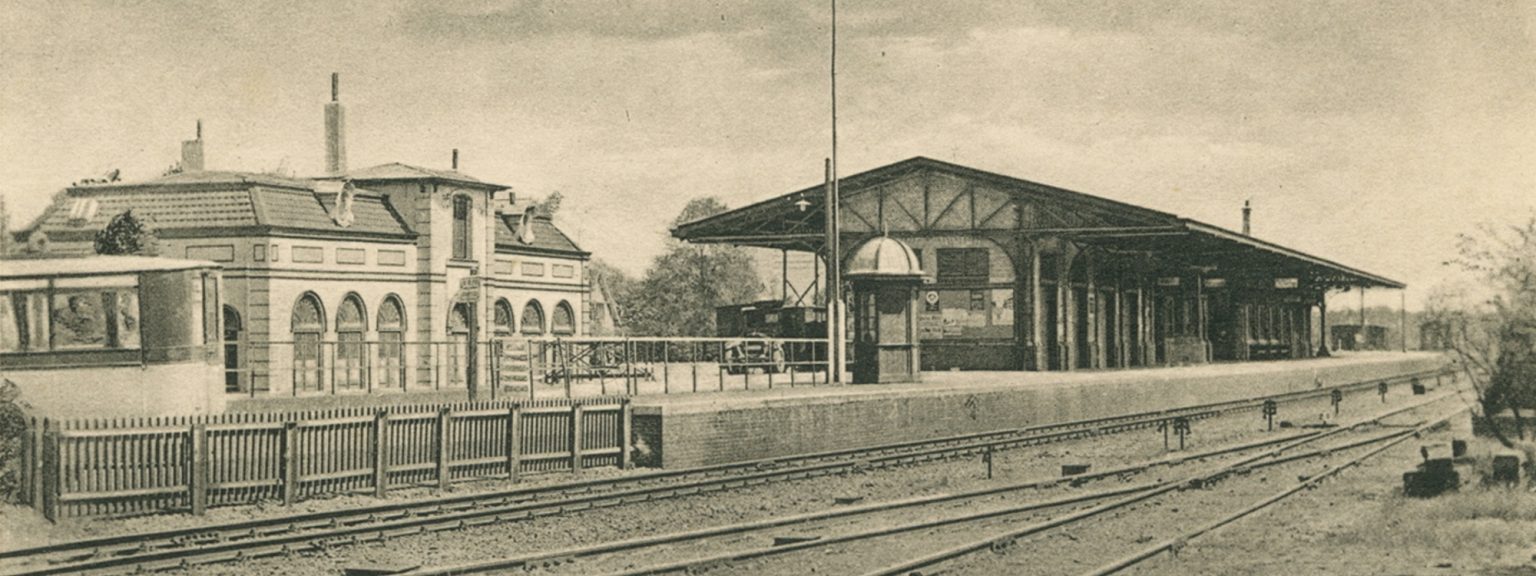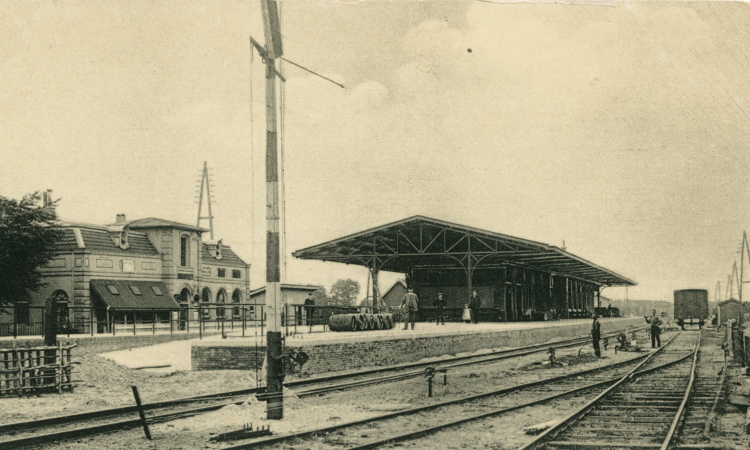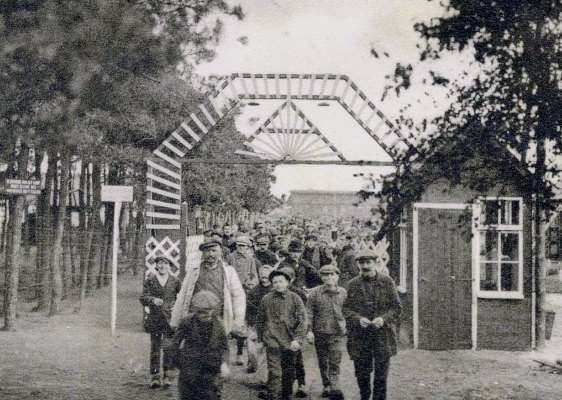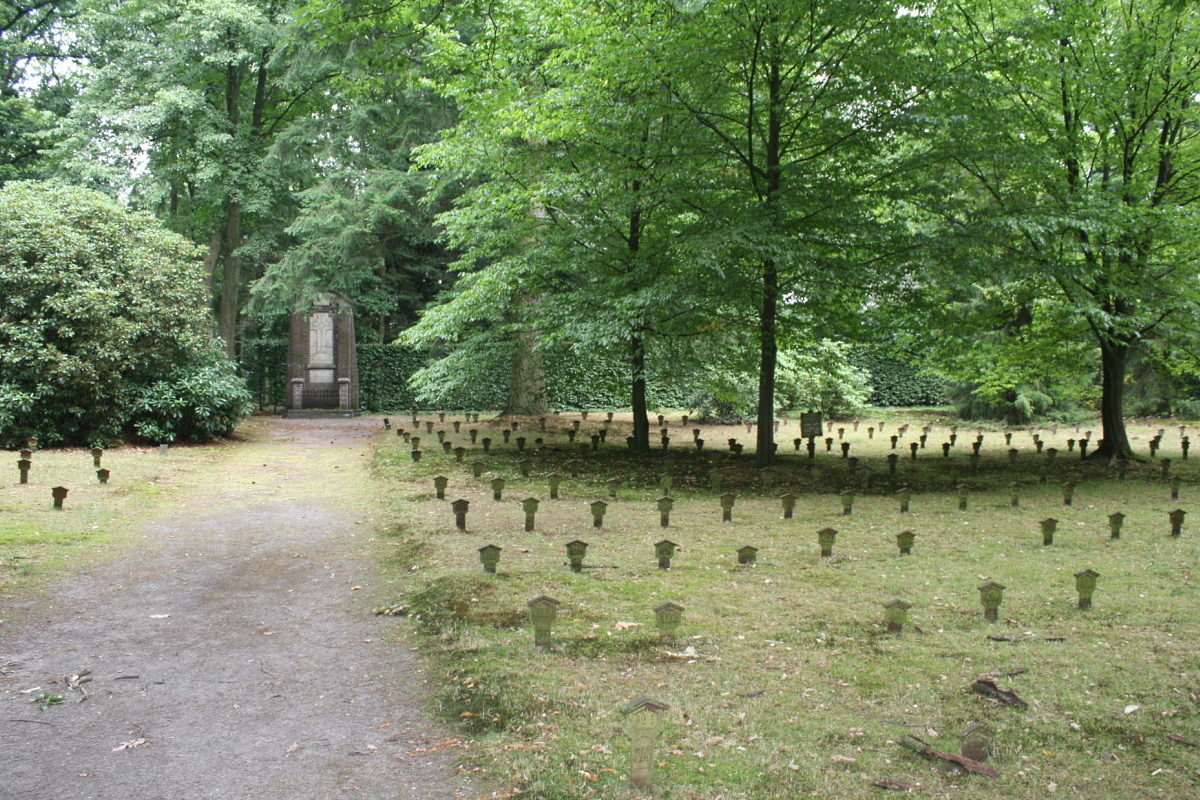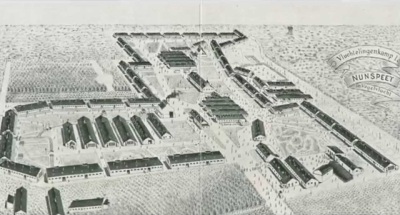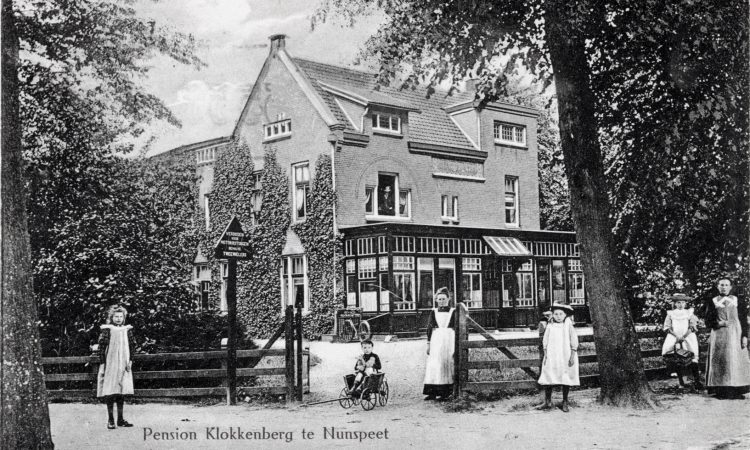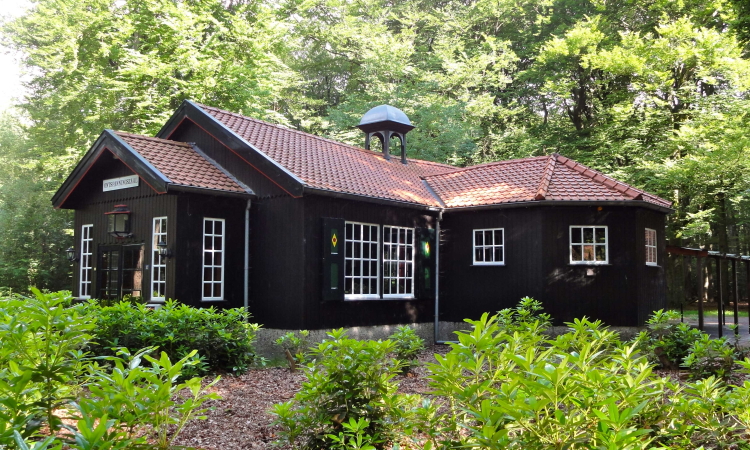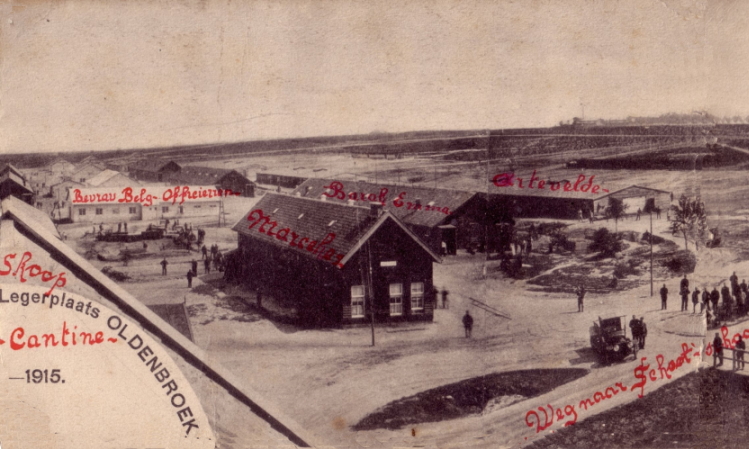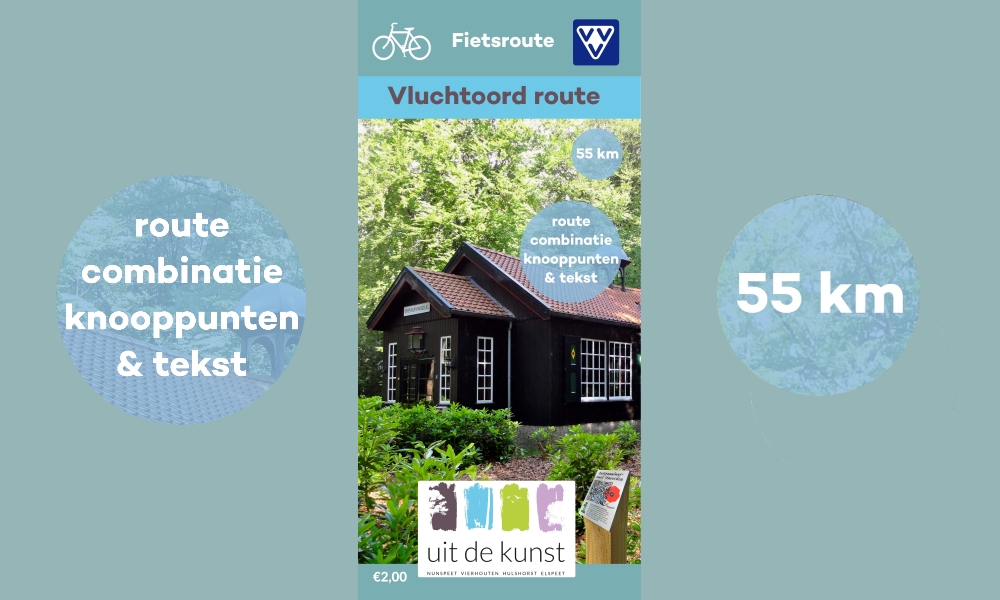A refugee camp in Nunspeet
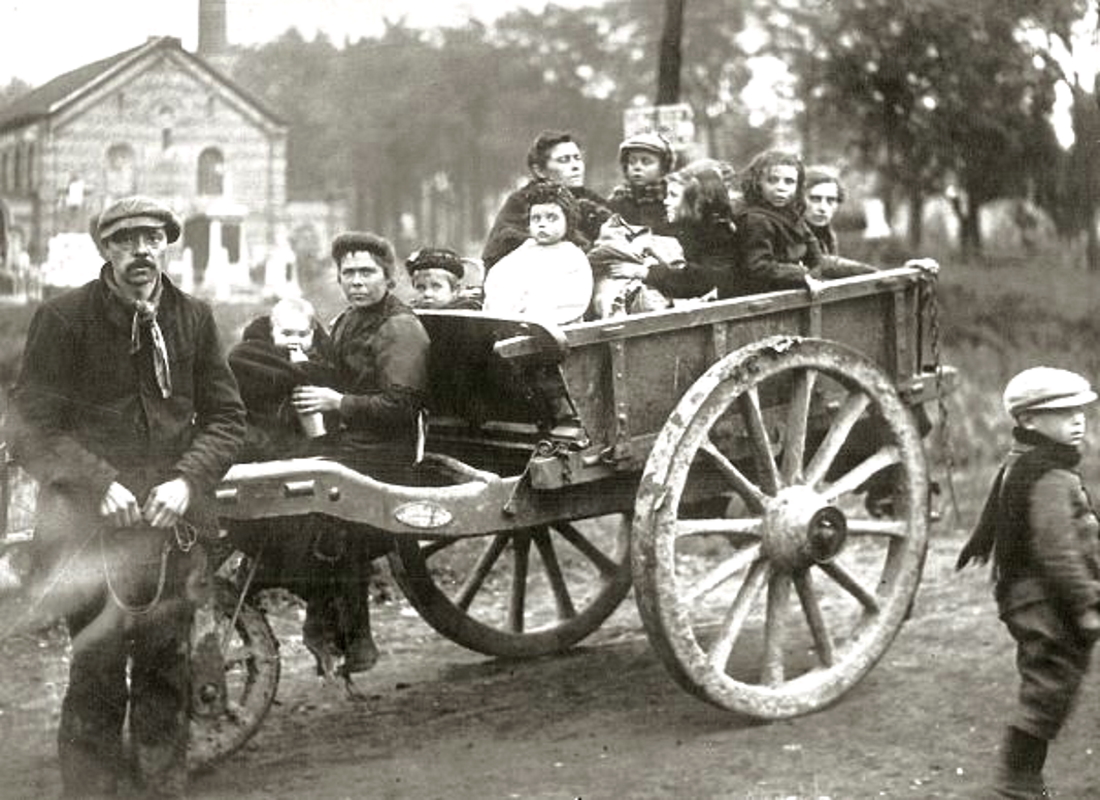
At the beginning of WWI, almost 1 million exhausted refugees from Belgium entered the Netherlands, fleeing German troops.
At the end of 1914, construction of this refugee camp in Nunspeet began. After an initial reception in the Oldebroek army camp, they were further distributed to Nunspeet, among other places, where they arrived at the train station. 70 barracks were built, in which no fewer than 13,000 people had to be accommodated. Ultimately, 6,529 people stayed in the Nunspeet camp.
The village included sleeping barracks, schools, a Catholic church, a theatre and a shop. Some barracks were given special names. For example, the ‘Congo’ barrack was for convicts and the ‘Jan Steen’ barrack was reserved for ‘public women’. The camp had its own power station and water supply and a hospital was set up just outside the camp. The residents were also able to garden and grow vegetables in the gardens.
However, the health situation was not all that good, which caused too many residents, including many children, to die in an epidemic. Staff members lived in the Klokkenberg. In 1919, the Nunspeet camp was demolished. At the old cemetery of Nunspeet, there is a Belgian monument and you can see numerous anonymous children’s graves. A residential area has now been built on the site of the former camp. This place is still popularly called the Belgian camp. The street names refer to members of the Belgian royal family. On the corner of Leopoldlaan and Fabiolalaan, there is an information board with a map of the former site of the Belgian camp. An example of an original barrack can be seen on the Allee in Staverden; Recreation room Staverden. Do you want to visit all these places? Then cycle the Vluchtoord Route! Along the way, you will pass 7 posts with QR codes, which you can scan to read the stories from the past.
